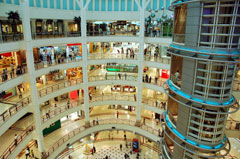 |
Aug. 28, 2020 - Supply Chain Flagship Newsletter |
 |
|
 |
|
||||||||||||||||||||||||||||||||||||||||||||||||||||||||||||||||||||||||||||||||||||||||||||||||
|
|||||||||||||||||||||||||||||||||||||||||||||||||||||||||||||||||||||||||||||||||||||||||||||||||
|
|
|
YOUR FEEDBACK
After our column last week noting we've turned from toilet paper shotages to "where's the beef?", our friend David Schneider of David K. Schneider & Company sent us this nice email explaning how the meat supply chain works. Now you know!
Feedback on the Meat Supply Chain:
For beef (and lamb/sheep), there are two stages of meatpacking - Primal and Final.
Primal Cuts are the large cuts - whole sections of the animal, cut away from the carcass, later packed for processing into final cuts.
Some of the larger packing operations run from kill to final in the same complex - the traditional way that people think of a meatpacking plant. But many of the new massive campus operations, including the JBL and Tyson sites in the news, ship under long term contracts meat packaged for retail or portion control use.
For decades the meat supply chain operated at two levels; packing houses that shipped primal-and sub-primal - packaged into vacuum bags and frozen for shipping to grocery stores - where meat cutters cut and package the final cuts for sale at that location.
Today, a sizable portion of the production from the kill line is still primal to package and shipped to other companies/facilities that do the Final cuts. Most of the consumers of primal and sub-primal are wholesale distributors, local butchers, Costco, and Asian grocery, where there is still local meat cutting.
A large portion of the US grocery market no longer operates local meat rooms in their retail locations. Walmart is one significant example of the retail scene, as is most of the Royal Dalheize group (Stop-n-Shop, Giant), Aldi, Lidl, and other growing chains. Those contracts with retailers are under tight margins, costs supported by the typically much higher foodservice contracts with bigger and steady margins.
The supply chain innovation that Tyson, JBL, and the rest employed was centralization and concentration of labor into these large campuses - close to the production of the animals. Our modern network of refrigerated logistics - temperature controls trucks and warehouses - helps facilitate the consolidation of the final steps of meat cutting from local to the market to local to the source.
Primal cuts flow between companies in the meat industry like cash - and interesting features in the USDA regulations allow for long term freezing of primal cuts that can sell later as fresh meat. There are times where hundreds of millions of pounds of frozen primal cuts sit in 3PL freezer warehouses. I suspect at this moment, hundreds of millions of pounds of frozen primal cuts sit in warehouses, unable to move to the market because there are fewer places that can do the final cut. I suspect the owners of this meat don't want to ship these cuts because to ship now erodes the future profit margin of the packaged and portion-controlled product.
The COVID virus exposes a substantial risk of consolidation and full-integration of production in the supply chain.
David K. Schneider
David K Schneider & Company, LLC
SUPPLY CHAIN TRIVIA ANSWER
Q: Maersk Line is the largest ocean container carrier. What company is number 2?
A: Switzerland's Mediterranean Shipping Company
|
POWERED BY: XDIMENSION
|






 But the strategies are different. Lowes said that it would open four additional ecommerce fulfillment centers over the next 18 months, including a direct fulfillment site in Mira Loma, Calif., set to open in October. The company also plans to open seven bulk distribution sites for large products such as appliances and barbecue grills, along with 50 cross-dock terminals where large items can be placed on delivery trucks sent to customers instead of sending them to retail stores first.
But the strategies are different. Lowes said that it would open four additional ecommerce fulfillment centers over the next 18 months, including a direct fulfillment site in Mira Loma, Calif., set to open in October. The company also plans to open seven bulk distribution sites for large products such as appliances and barbecue grills, along with 50 cross-dock terminals where large items can be placed on delivery trucks sent to customers instead of sending them to retail stores first.


